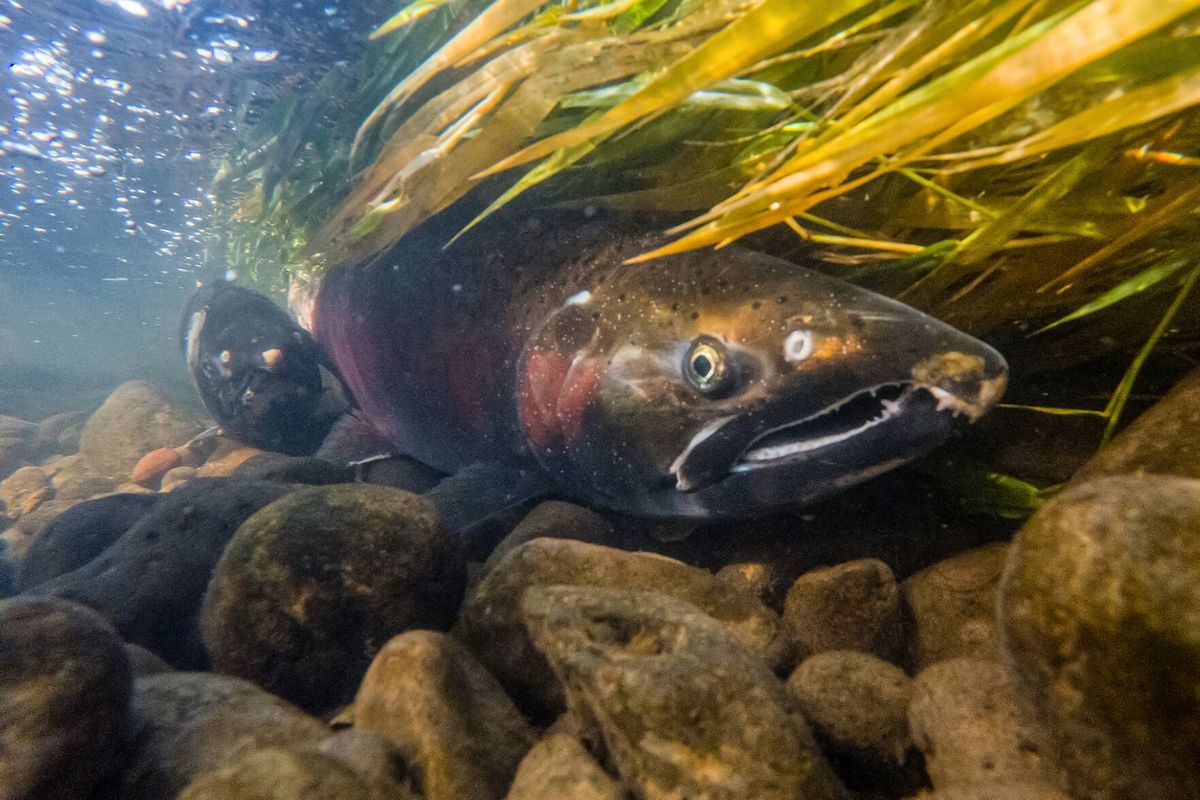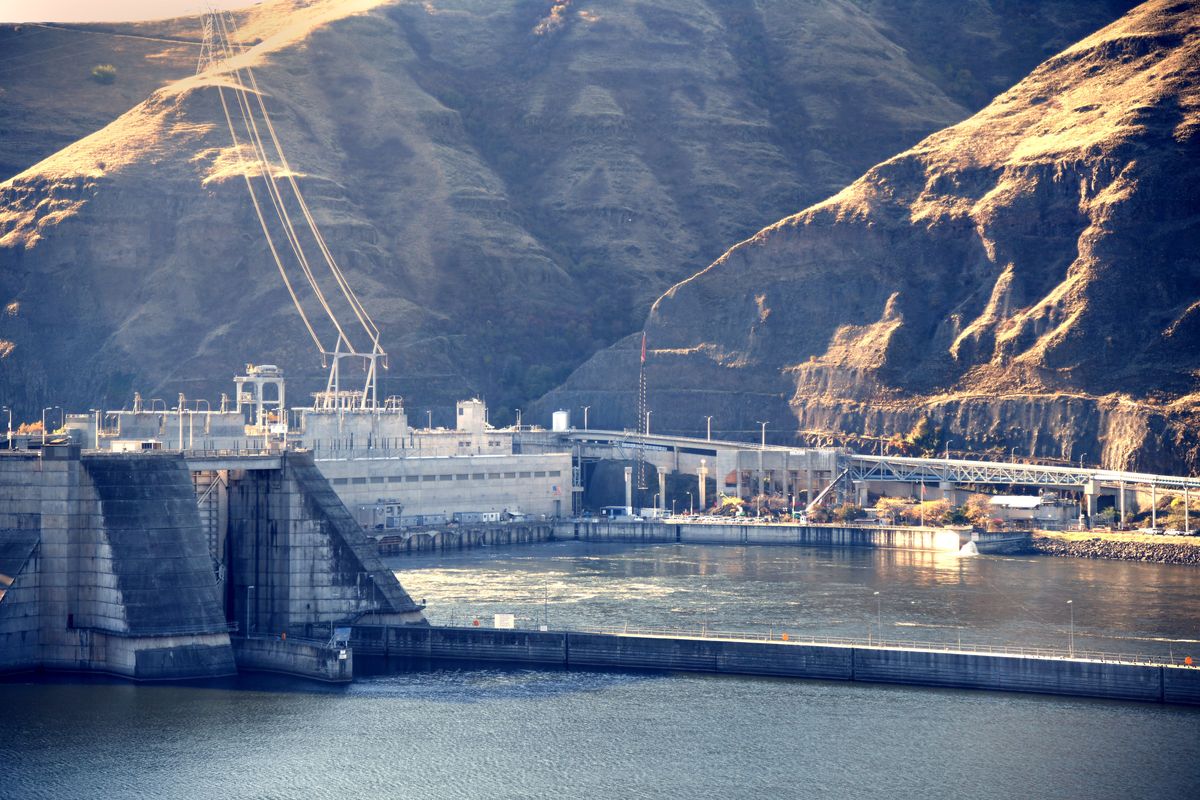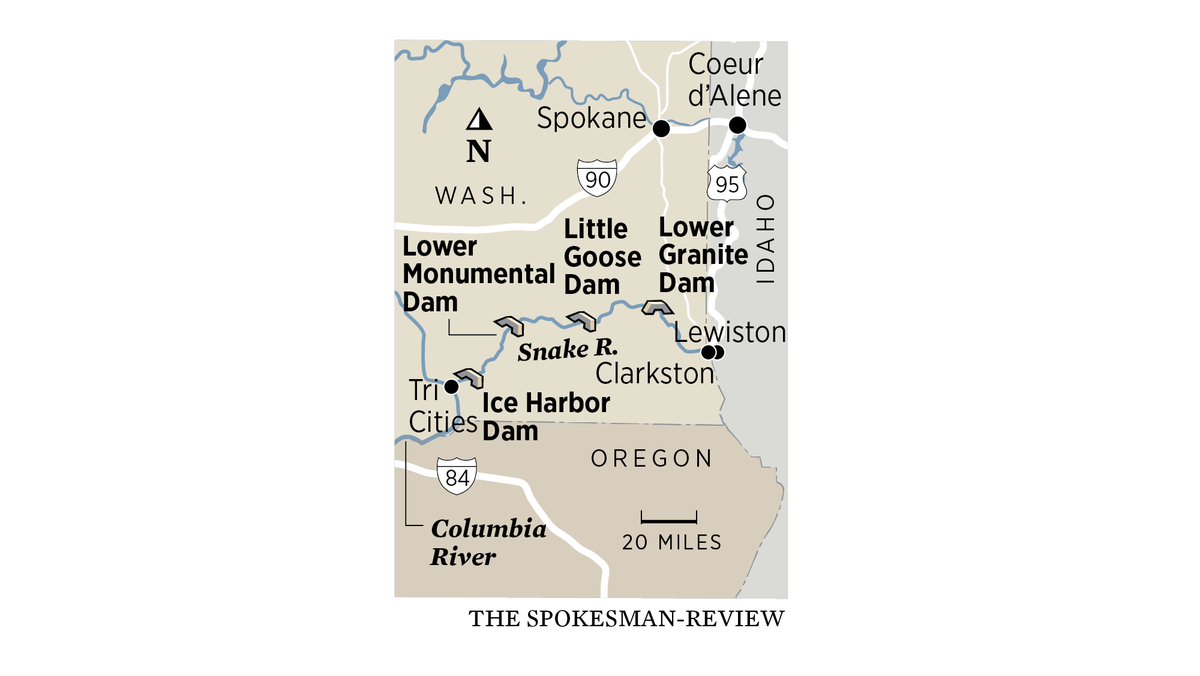Survey asks people how they use the Lower Snake River
Lower Granite Dam, situated on the Snake River west of Clarkston, is one of the dams in the Columbia River basin that presents barriers to anadromous fish such as salmon. (JESSE TINSLEY/THE SPOKESMAN-REVIEW)Buy a print of this photo
State and federal officials want to know how you play in the Lower Snake River corridor.
The Washington State Recreation and Conservation Office and the Army Corps of Engineers have launched an online survey to gather information about recreational use on the river and how that use would be affected if the four Lower Snake dams were to be removed.
Called the Recreation Demand Survey, it’s part of a $1.2 million study between the two agencies that stems from the Biden administration’s commitment earlier this year to analyze the possibility of breaching the dams.
Ben Donatelle, a policy specialist for the Recreation and Conservation Office, said the study won’t make a recommendation on whether the dams should be removed, and instead aims to catalog existing recreation and what could change if the Lower Snake became a free-flowing river.
“We really want to know from people how they are currently using the area and how would they like to use the area in the future,” Donatelle said.
Tribes and salmon advocates have long pushed for removing the four Lower Snake River dams – Ice Harbor, Lower Monumental, Little Goose and Lower Granite – to restore habitat for salmon and steelhead that navigate the dams on their way to spawn in streams like the Clearwater, Grande Ronde and Salmon rivers.
Opponents argue the dams are an important source of hydropower and that breaching them poses a threat to farmers who rely on the water for irrigation and to industries that rely on the river as a shipping channel between Lewiston and the Tri-Cities.
Litigation from the Nez Perce Tribe and others over the dams’ impact on wild salmon returns led to the settlement agreement, which the Biden administration signed in February. The deal, signed by four tribes and the states of Oregon and Washington, halts litigation for up to 10 years. In exchange, the federal government agreed to invest $1 billion in fish recovery efforts and tribal energy programs.
Federal officials also agreed to study how transportation, irrigation and recreation services could be replaced if Congress were to approve removing the dams.
The Army Corps of Engineers announced in early November that it was partnering with the state of Washington on transportation and recreation studies. For the transportation study, the Army Corps is providing $750,000 to supplement an existing $4 million Washington study, which will analyze what it would take to move the region away from river-based transportation.
Washington Department of Transportation officials are also seeking public feedback through an online survey for the study, which is expected to be complete in late 2026.
The recreation study is expected to be done by the end of 2025. Donatelle said a consultant team is compiling visitation data. It is also analyzing what the river itself might look like without dams and what facilities might be needed.
The survey, available at snakeriverrecreation.com, will help them understand what demand might look like in the future. It asks people how they use the river in the zones behind the four dams, including how often they go and what they do there, among other questions. The website estimates it takes 10 to 15 minutes to complete.
Donatelle said there’s no hard deadline, but that the survey would likely stay online through late December or early January, depending on the number of responses.




